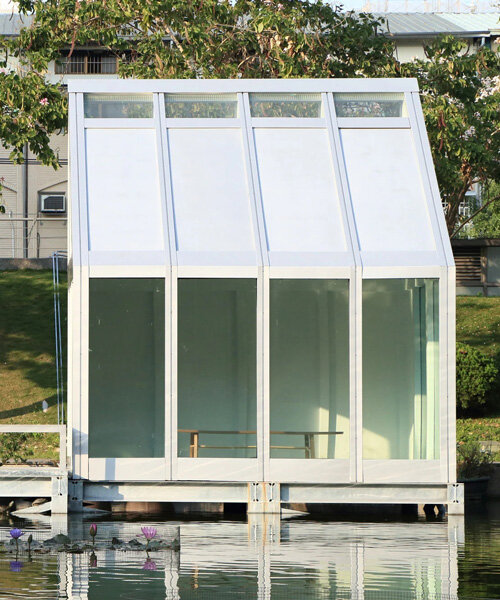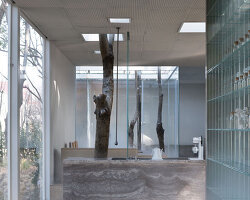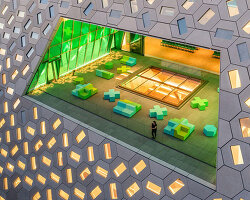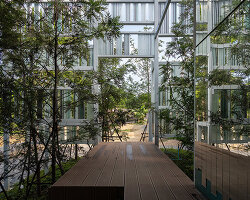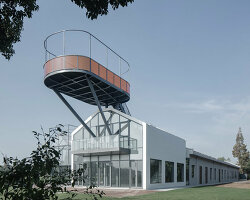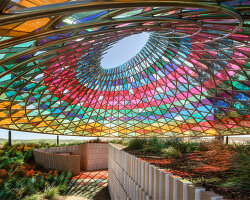water-filled glass absorbs heat from sunlight
An innovative window prototype has been developed by British startup Water-Filled Glass. The new assembly proposes the latest iteration of the familiar double-paned insulated window, introducing a thin membrane of water between two layers of glass. This imperceptible film of water works to absorb heat from sunlight — or heat escaping from the building’s interiors. Once warmed, this water is pumped through an underfloor network of pipes throughout cooler areas of the building.
This patented technology has been developed by Loughborough University architecture lecturer Matyas Gutai together with his colleagues Daniel Schinagl and Abolfazl Ganji Kheybari. Gutai founded the British startup in 2020 and had previously worked for Japanese architect Shigeru Ban and in Kengo Kuma’s research lab at the University of Tokyo.
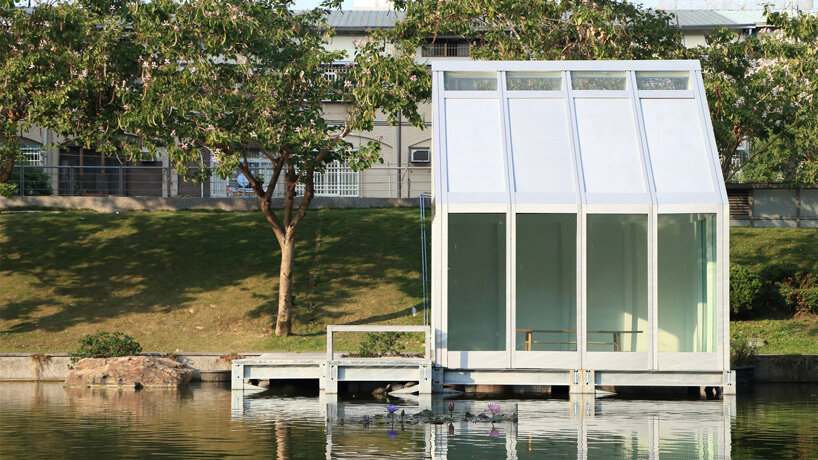 Water House 2.0 at Feng Chia University in Taiwan | images courtesy Water-Filled Glass
Water House 2.0 at Feng Chia University in Taiwan | images courtesy Water-Filled Glass
british startup works toward a passive architecture
As window insulation strategies have long marked a hurdle in the search of a passive architecture, the team at Water-Filled Glass hopes that this new technology can bring efficiency to even the glassiest buildings. According to the British startup this method of thermal energy absorption not only warms interiors in colder climates, but limits the amount of solar heat gain entering a space in hotter climates. This lessens reliance on secondary shading as well as active heating and cooling systems — thus reducing overall carbon emissions.
To prevent the water from freezing during the winter, the assembly is altered to a triple-pane window with its outermost cavity filled with argon insulation. At most, the water can be warmed up to forty degrees Celsius (104 degrees Fahrenheit.)
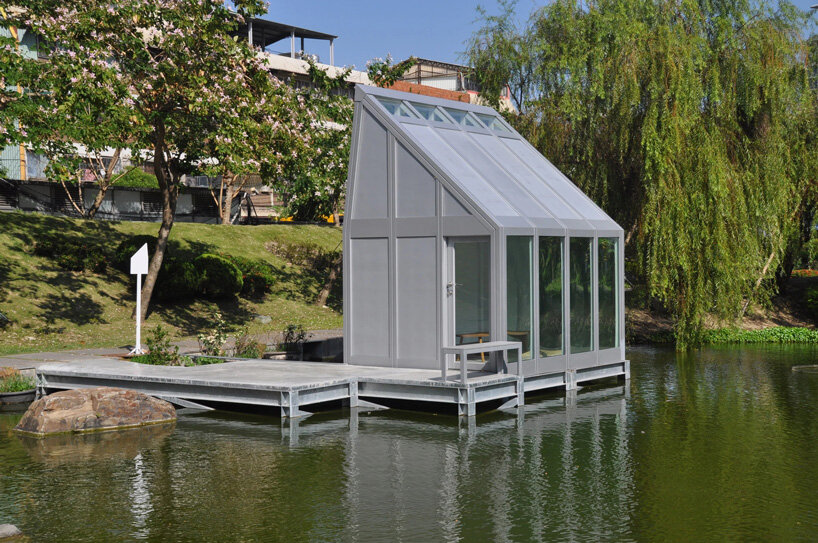
The team continues to estimate that the technology will reduce energy bills by around twenty-five percent — depending on climate and window-to-wall ratio — when compared to standard windows. While it is appropriate for new constructions, it is even recommended for building renovations as an energy-saving retrofit, where it is assembled behind the existing glazing.
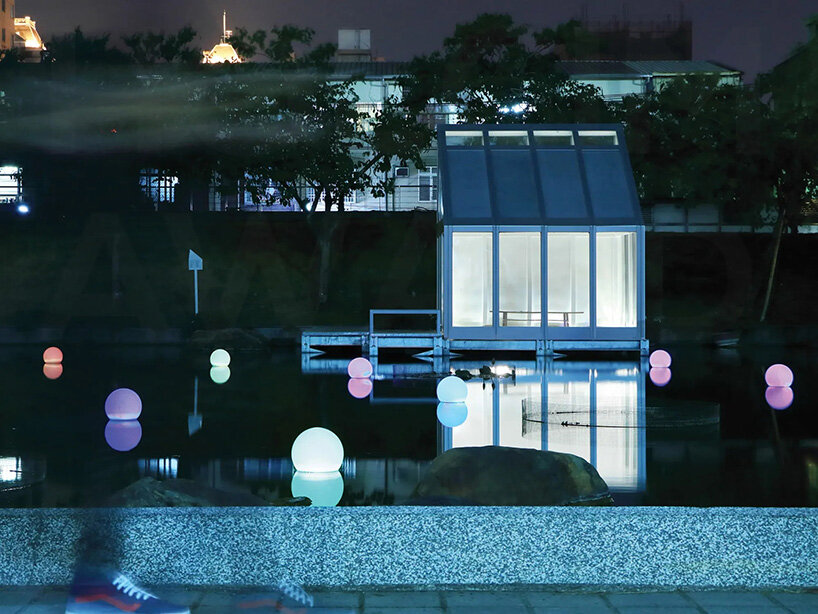
the new window system is especially recommended for smaller spaces which quickly heat up or cool down
real-world applications
The team especially recommends its Water-Filled Glass system for smaller buildings that are prone to quickly cool down in the winter or overheat in summer. Two prototype pavilions have already been completed using the new technology, dubbed Water House 1.0 in Hungary and Water House 2.0 at Taiwan’s Feng Chia University. Soon, the startup will see the completion of its first commercial projects — an industrial building in Hungary and an apartment complex in the United States — which are currently under construction.
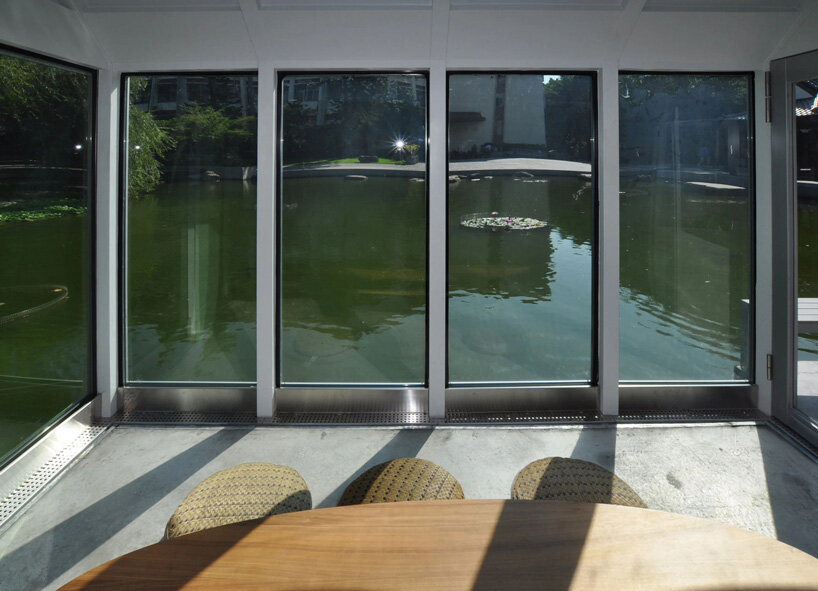 the thin film of water is visually imperceptible
the thin film of water is visually imperceptible
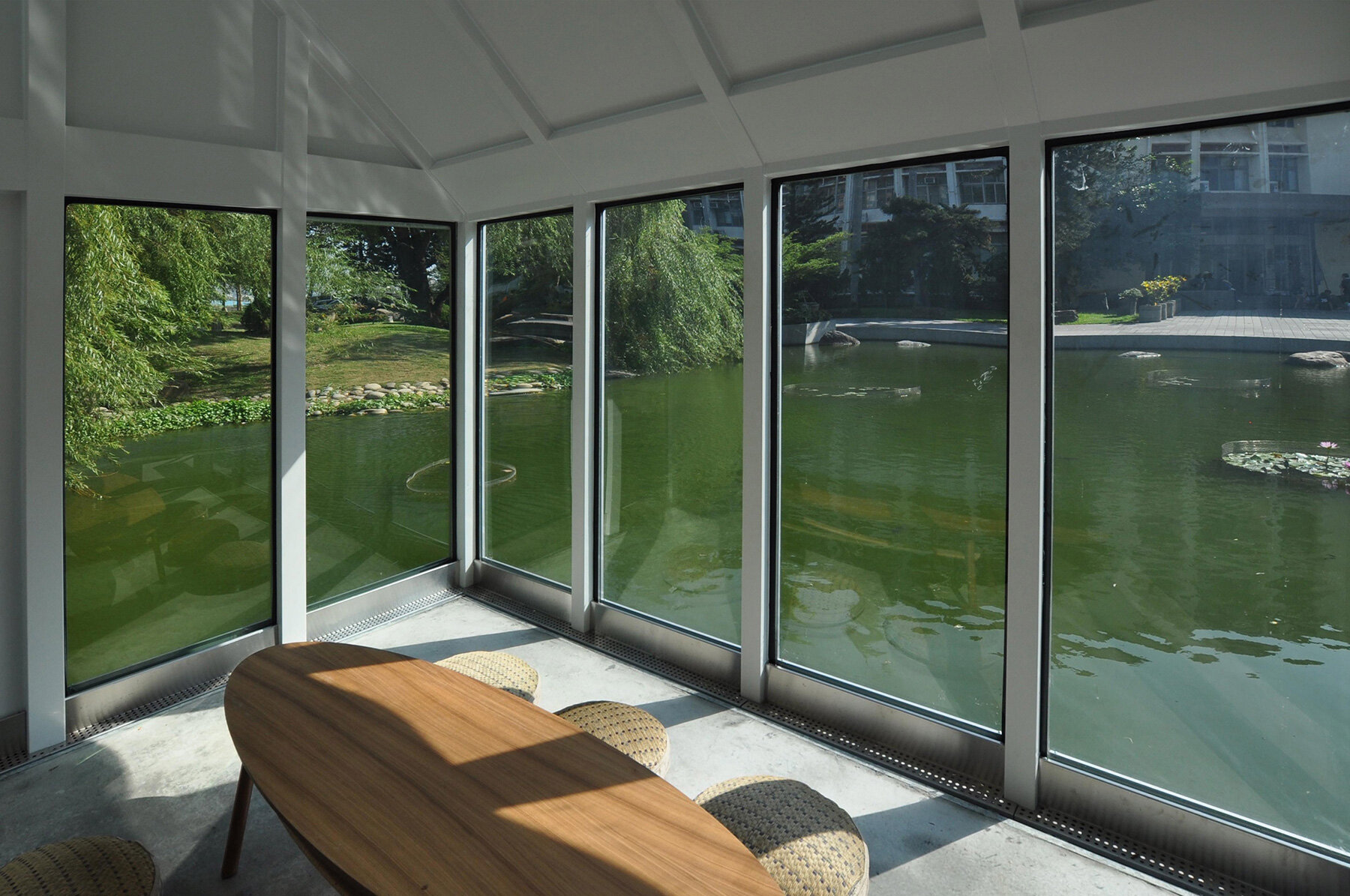
the system lessens reliance on secondary shading, heaters, and air conditioning

project info:
startup: Water-Filled Glass | @waterfilledglass
